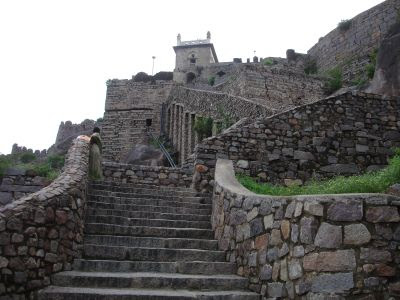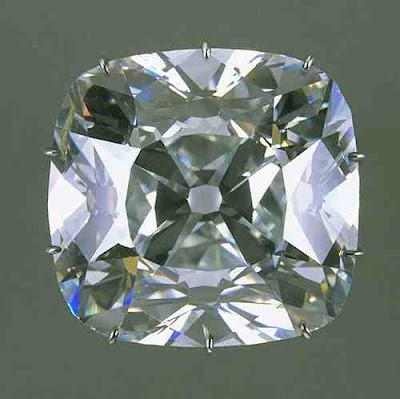Category Archives: investing in diamonds
Investing in Gemstones, Part II; A Strategy:
Avoiding the Con:
There were a number of phony gemstone investment schemes in operation during the hard asset investment craze of the late 1970s and early 1980s. Until Congress put a stop to it, investors were purchasing, gems, antiques and Shaker rocking chairs as part of their IRA portfolios.
To avoid prosecution many gem investment scammers set up boiler room operations in Canada, but sold mostly to gullible U. S. investors. The pitch was simple and ingenious. To keep buyers from seeking an outside appraisal, the gems arrived in sealed packets with a microfilmed “certificate of authenticity”. Buyers were warned that breaking the seal would invalidate the certificate and negate affect potential resale.
Over the years, several victims have sought me out to appraise their purchases. In all cases, the gems were wildly overpriced stones and of a quality best described as Continue reading
Investing In Gemstones, Part I: The Market
Richard W. Wise, G.G.
© 2009
Bye, Bye Bling:
Perhaps it’s the tenor of the times. Increasingly I find myself fielding questions about gems as an investment. With government printing presses working 24/7, many people are concerned that deficit spending, coupled with Government stimulation of the credit markets in the U. S., Europe, China and Japan, will eventually lead to hyperinflation. With stocks, bonds and real estate in the tank and currencies at risk, people are thrashing about looking to find a safe financial haven. In uncertain times, investors turn increasingly to hard assets. Luxury per se is out, but investment is definitely in. (pictured above left a 1.01 vivid pink diamond from the 2008 Argyle tender)
The Problem:
Stocks and bonds trade in an orderly market. One share of General Electric common stock is just like another. Stock Exchanges guarantee that their members can trade stocks at the going price anytime the exchange is open. This gives stocks the advantage of liquidity. Stocks and bonds trade at established prices and these prices are Continue reading
The Golconda Diamond
Golconda Diamond
by Richard W. Wise
© 2007
Just the other day one of my readers emailed a question about Golconda diamonds. A search of the literature reveals a great deal of uncertainty about the exact meaning of the term. The source of some of the confusion can be traced to the fact that the term Golconda diamond, like many another bandied about by diamond dealers and auction houses has more than one definition; this one appears to have two; one geographic the other varietal.
Definition 1:
Until the year 1725, when diamonds were discovered in the Brazilian state of Minas Gerais, most of the world’s diamonds came from India. A group of mines concentrated around the Krishna River in the Kingdom of Golconda, located in the modern Indian state of Andhra Pradesh, were one major source of Indian diamonds. A majority of the diamonds mined were subsequently sold in the City of Golconda which became a major trading center. Several of the major mines, including Rammalakota and Kollur are mentioned by the famous Seventeenth Century French gem merchant Jean-Baptiste Tavernier as being a source of high quality diamonds.
Thus, our first definition: A Golconda diamond is a diamond from a specific geographic area within the historic Kingdom of Golconda.
Tavernier was one of the first connoisseurs to notice that diamonds from these mines were often exceptionally transparent and describes the best of the stones as” gems of the finest water.” The four criteria for evaluating any gemstone are: Color, Cut, Clarity and Crystal. These are what I refer to in my book, Secrets Of The Gem Trade, as “the Four Cs of Connoisseurship.” The term “water” combines two of the four, color and crystal. Color in diamond refers to relative colorlessness, a diamond graded “D” the highest grade, is a diamond totally without any trace of yellow. Crystal is the synonym for transparency that I have chosen to describe the fourth C of connoisseurship. I chose it because of its connotation (clear as crystal) and because it starts with the letter C and rhymes with the other three and is easily remembered.
Modern scientific analysis has shown that many famous high quality diamonds such as the Cullinan, Regent (image: at top of page) and The Koh-I-Noor that can be proven to come from the Golconda area are of a specific type of rare, almost pure diamond known as Type IIa. Less than 1% of the world’s diamonds are Type IIa. Scientifically speaking, Type IIa diamonds are diamonds that conduct electricity and contain no significant amount of nitrogen in the diamond crystal lattice.
Nitrogen is the impurity in diamond that imparts the yellowish hue. The lack of yellow makes for a pure colorless (D,E,F) color diamond. For some unknown reason, possibly plastic deformation of the crystal or unknown color centers, some type IIa diamond have yellowish, brownish or even pink body color. Some experts claim that all Golconda diamonds are Type IIa. There is, as far as I know, no scientific evidence to back up that claim.
Definition 2:
Science has not explained the exceptionally degree of transparency found in many Golconda stones. Some Type IIa diamonds also exhibit exceptional transparency or crystal. It may have something to do with the purity of the carbon crystal lattice. Type IIa diamonds are highly transparent in shortwave ultraviolet light.
The visible attribute is variously described as “clear as a mountain stream”, “whiter than white” and “super-d”. Some of these terms are misleading what we are talking about is super-crystal.
Transparency is more important in gems that are poorly cut. In India, then as now, good proportions took a backseat to size and weight. The French Blue, the type IIb gem that eventually became the Hope Diamond was originally 112 carats. Five years after Tavernier sold the stone to Louis XIV, Pitau the king’s diamond expert recut the stone to 66 carats to improve its brilliance and life a 40% loss in weight that would never have been countenenced in India. Visually, gems of fine water, however well cut, possess a unique beauty not found in other diamonds. In a world flooded with diamonds, this is indeed something special.
Thus, our second definition: Diamonds regardless of geographic origin that are of high color (D-E) that exhibit exceptional crystal are often called Golconda Diamonds.
The situation discussed above in not unique. Before gemologists worked out a way to identify the geographic origin of some diamond, ruby, sapphire and emerald; gems with characteristics similar to those from a certain source were often described using geographic terms such as Cape (as in Good Hope), Kashmir, Burma and Ceylon. These terms have become ingrained in the public mind and associated with certain levels of quality. So today gemstones that can be proven to come from a famous location will often command a high premium that has little or no relationship to the quality of the given gemstone. At auction, diamonds with a proven Golconda provenance may fetch a premium of 50% or more over a diamond of comparable quality that lacks the Golconda provenance.
How does one establish that a diamond is from Golconda? Well, if you can document a chain of ownership dating back to 18th Century India you have a good case. If you are depending on science, forgetaboutit. Even if all Golconda diamonds were type IIa, it does not follow that all IIa diamonds are from Golconda. In fact we know that Brazil has produced type IIa stones.
So, eventually, you think, science will solve the puzzle. Not likely, diamonds are formed within the earth’s mantle deep beneath the country rock where ruby, sapphire and emerald are formed. Diamonds do not contain the signature inclusions that can be matched up with specific geographic locations that make it possible to identify their origin.
Ok, so which would you rather have, a diamond with high color and exceptional crystal or a diamond from one of the historic mines of Golconda? Well, if you are selling the best answer is both because if it of the finest water and a proven Golconda provenance it will command the highest premium of all. Speaking for myself, give me the most beautiful rock. Wouldn’t it be a lot simpler if the finest diamonds came from Hoboken, New Jersey.
If you are interested in learning more about Golconda Diamonds or are simply looking for a new way to dazzle your friends at cocktail parties. Read more about the four Cs of connoisseurship. Follow me on gem buying adventures in the pearl farms of Tahiti. Visit the gem fields of Australia and Brazil. 120 carefully selected photographs showing examples of the highest quality gems to
dazzle your friends at cocktail parties. Read more about the four Cs of connoisseurship. Follow me on gem buying adventures in the pearl farms of Tahiti. Visit the gem fields of Australia and Brazil. 120 carefully selected photographs showing examples of the highest quality gems to educate the eye, including the Rockefeller Sapphire and many more of the world’s most famous gems. Consider my book: Secrets Of The Gem Trade, The Connoisseur’s Guide To Precious Gemstones.
educate the eye, including the Rockefeller Sapphire and many more of the world’s most famous gems. Consider my book: Secrets Of The Gem Trade, The Connoisseur’s Guide To Precious Gemstones.
“Wise is a renowned author… He’s
done a marvelous job of this first book, monumental work, a tour de force…My recommendation: Buy this book”.
Charles Lewton-Brain, Orchid
Only $37.95. Read a couple of chapters online: www.secretsofthegemtrade.com.
Buy it on Amazon: www.amazon.com




